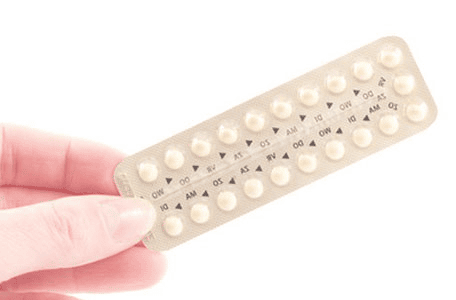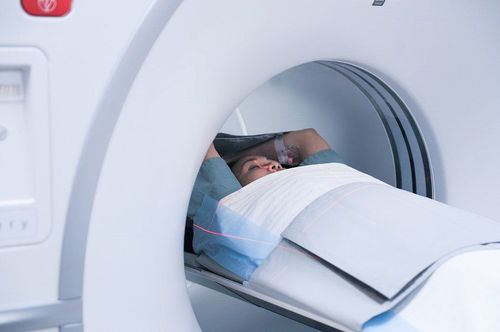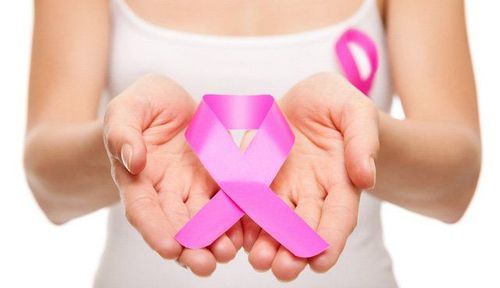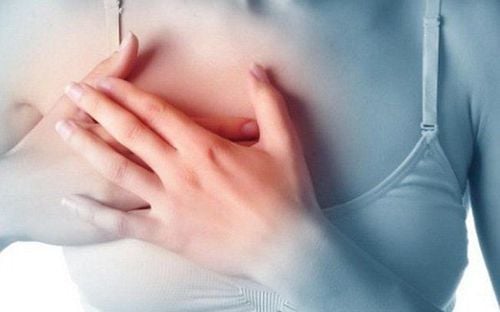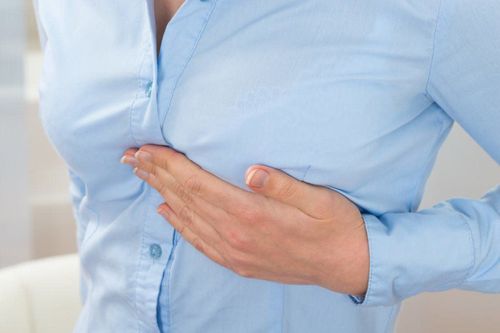This is an automatically translated article.
The article was professionally consulted with Specialist Doctor II Lai Thi Nguyet Hang - Obstetrician and Gynecologist - Department of Obstetrics and Gynecology - Vinmec Ha Long International General Hospital.Some symptoms closely resemble breast cancer, but may actually be caused by cystic fibrosis. Cystic fibrosis of the breast is a benign lesion, common in middle-aged women, the cause is mainly related to endocrine factors, caused by hormonal disorders.
1. What is cystic fibrosis of the breast?
Cystic fibrosis of the mammary gland is a diffuse lesion consisting of many abnormalities in combination of many factors: proliferation of mammary glands and ducts combined with stromal fibrosis.This condition is common in women between 30 and 50 years old, the disease is benign in nature but is one of the factors that increase the risk of breast cancer.
2. Common types of cystic fibrosis of the breast
Breast cyst: A breast cyst is a condition in which the milk ducts or milk ducts dilate into a fluid-filled cyst, the more fluid secreted, the larger the cyst. The lesion is characterized by a round or oval mass, the size varies from a few mm to several centimeters, containing fluid inside, and the outer shell is a cyst that can be thin or thick. Fibrocystitis: Is a solid mass, several centimeters in size, with unknown boundaries, usually appearing on the upper outer half of the breast, with mild pain before each menstrual period. After menopause, this phenomenon gradually subsides and disappears Tubular hyperplasia: Lesions are usually plaques or solid masses, 1 to several centimeters in size, can be a patch or patches in 1 or 2 breasts . Closer to the menstrual period, the size is larger and causes much pain, when menstruating, the size is smaller and less painful.
3. Causes and risk factors for cystic fibrosis of the breast
3.1 Causes of the disease The disease is mainly caused by the long-term impact of the mammary gland in the imbalance between estrogen and progesterone. In which the estrogen concentration is higher than that of progesterone, it may be due to increased endogenous estrogen concentration or increased sensitivity of the mammary gland to endogenous estrogen.3.2 Risk factors Women between 30 and 50 years old. Regular use of drugs containing estrogen. Related to diet: In some cases, eating chocolate, drinking caffeine or eating high-fat foods causes symptoms. However, there is no clear evidence for this.
4. Signs of cystic fibrosis of the breast
There are many women who have no signs of cystic fibrosis, but some will have signs of the disease such as:Breast pain: This is the most common sign, pain is related to the menstrual cycle. , usually appearing about 8 days before menstruation, disappearing after menstruation. Pain may be in 1 or 2 breasts, most often in the upper outer half of the breast. Many women are in so much pain that they do not dare to touch their breasts. Pain may radiate to the arms.
Palpable masses or lesions in the breast are characterized by: The cysts are characteristic: The tumor is round, well-defined, slightly hard, often painful, usually located in the upper 1/4 or a lump in the nipple. , size and quantity change.
Palpable hard patches on the breast are not clear, the most common location is the upper and outer 1/4, disappearing after menstruation.
The breast feels bigger than usual.
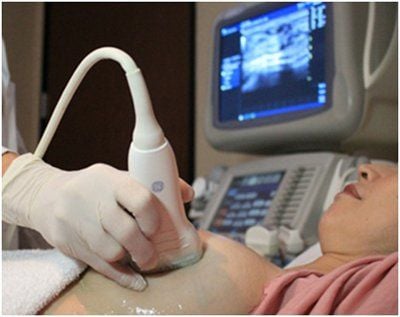
5. How is cystic fibrosis diagnosed?
To diagnose the disease, it is necessary to rely on clinical signs and combined with laboratory tests including:Ultrasound is a simple method, detecting the location, number, and size of tumors, the growth of tumors. fibrosis of the mammary gland and can help differentiate between cystic and solid lesions. X-ray mammogram : On the X-ray can be seen: Breast increased density. The opacity corresponds to the edematous areas. Round contrast corresponds to a cyst. Large and small calcifications are scattered, not concentrated in groups. Aspiration cytology : Aspiration of fluid in the breast cyst allows to assess the color of the fluid: Aspiration of fluid mixed with blood often suggests cystic cancer. If the fluid is clear, cloudy, yellow or green, then it is usually a benign cyst. After cystectomy, the breast should be re-examined to make sure the tumor has been completely removed. If the tumor remains, a biopsy should be performed. Cystic fibrosis of the breast is a benign lesion, so when you encounter this condition, you should not worry, but the disease increases the risk of cancer, especially in those who have a family history of breast cancer. When palpating hard patches or lumps in the breast, women should go to the doctor to detect the disease through paraclinical means.
Currently, Vinmec International General Hospital applies a needle-assisted breast biopsy with vacuum support under Stereotactic positioning: This technique uses a biopsy needle with a large size of 12 G or more, combined with Vacuum suction should help get more samples, thereby having a higher chance of success. In addition, this technique is also less invasive than the open biopsy method: The incision site does not require any recovery stitches, does not require special care, and the patient can return to normal daily life right away. tomorrow. In addition, the placement of markers to mark the intervention site is carried out right in the procedure to help manage the lesions after the test results are more favorable. This is the most modern technique today, being deployed by Vinmec Times City (Hanoi) and very few hospitals in Vietnam.
Please dial HOTLINE for more information or register for an appointment HERE. Download MyVinmec app to make appointments faster and to manage your bookings easily.






